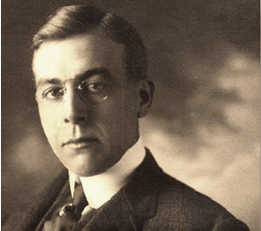Edward S. Harkness gives away the family fortune
- Don Schueler
- Apr 29, 2023
- 7 min read
Updated: Jul 15

Detailed Life Events
Born January 22, 1874 in Cleveland, Ohio Died January 29, 1940 (aged 66) Resting place Woodlawn Cemetery Bronx, New York Education St. Paul's School Yale College Columbia Law School Political party Republican Spouse Mary Stillman Parent(s) Stephen V. Harkness Anna M. Richardson (Harkness) Relatives Charles W. Harkness, brother Florence, sister Lamon V. Harkness half brother
Children None
Edward S. (Ned) Harkness was an American heir and philanthropist. He inherited his fortune from his father, Stephen V. Harkness, who was one of the five founders of Standard Oil, and from his brother, Charles W. Harkness. In 1918, he was ranked the 6th-richest person in the United States by Forbes magazine's first "Rich List", just behind John D. Rockefeller (Standard Oil), Henry Clay Frick, Andrew Carnegie, George Fisher Baker, and William Rockefeller (Standard Oil).

Ned and Mary Harkness
After graduating from Yale, Edward Harkness married Mary Stillman, daughter of wealthy New York attorney Thomas E. Stillman, in 1904. Mary's maternal grandfather was Thomas S. Greenman, a shipbuilder in Mystic, Connecticut, who co-founded George Greenman & Co shipyard. (This is now part of the Mystic Seaport Museum).

Ned and his wife Mary provided significant donations to private hospitals, art museums, and educational institutions in the northeastern United States through his family's Commonwealth Fund, as well as through private grants. His contributions were among the most generous of the early twentieth century. Notably, he supported Columbia University, Yale University, Harvard University, Butler University, Phillips Exeter Academy, St. Paul's School, the Metropolitan Museum of Art, and the University of St Andrews in Scotland, cementing his status as a major benefactor.
Ned inherited his father's subdued and understated Scottish nature, and he didn't believe in flaunting his wealth. Instead, he considered his life's purpose to be finding opportunities to give back through philanthropy. Never a seeker after personal glory, his gifts were made quietly and without fanfare. He shunned public notice, would never make a speech, and conscientiously refused to grant interviews. He declined an honorary degree from Yale three times. He also chose to remove his family name from a Yale building, renaming the Harkness Memorial Quadrangle to Branford and Saybrook colleges.
The Harkness family's charitable contributions amounted to over $129 million, which is equivalent to approximately $2 billion in 2023. In comparison, their philanthropic contemporaries John D. Rockefeller and Andrew Carnegie donated $550 million ($8.3 billion today) and $350 million ($5.5 billion today), respectively.
Harkness Philanthropy
Medical
Harkness encouraged and orchestrated the merger of Presbyterian Hospital and Columbia University's College of Physicians and Surgeons, creating Columbia-Presbyterian Medical Center (CPMC), the world's first academic medical center. CPMC was built in the 1920s on the site of Hilltop Park, the one-time home stadium of the New York Yankees, which Harkness purchased and donated. Despite his aversion to having anything named for himself, The Edward Harkness Eye Institute was named by relatives.

In 1997, Columbia-Presbyterian merged with the New York Hospital. New York Hospital had affiliated with Cornell University's Weill Cornell Medical College in the 1930s, following their lead. Now known as NewYork-Presbyterian Hospital / Columbia University Medical Center, the Harkness Pavilion, named for his father Stephen, is a central part of the campus.
Arts
Harkness was a major benefactor of the New York Public Library and the Metropolitan Museum of Art. Harkness, in addition to donations to the Decorative Arts Department, gifted the museum's initial Ancient Egyptian art collection. Harkness bought the complete Tomb of Perneb for the Met and helped purchase the Carnarvon Collection of Egyptian artifacts. He also donated the Met's unofficial mascot, a blue decorative hippo from the Egyptian Middle Kingdom's Twelfth Dynasty. It is known as "William".
Ned was actively involved in the discovery and excavation of King Tutankhamun's tomb. Mr. and Mrs. Harkness and Albert Lythgoe visited Howard Carter at the site multiple times and in fact, Carter invited Harkness to witness the opening of King Tutankhamun's sarcophagus on February 3, 1924.
Education
In 1917, a year after Ned's brother Charles' death, his mother Anna Harkness donated $3 million to Yale University to build the Memorial Quadrangle student dormitory in Charles' memory. In 1918, Anna Harkness established the Commonwealth Fund with an initial gift of $10 million, and Ned Harkness was made its president.
Ned Harkness and his wife made many contributions to educational buildings, including St Salvator's Hall at the University of St. Andrews; Harkness Chapel and Harkness Dormitory at Connecticut College; Butler Library at Columbia University as well as the original portions of the Columbia University Medical Center and the undergraduate dormitories at Brown University and Connecticut College—all of these were built through his philanthropy or that of his wife, Mary.
Between 1926 and 1930, Harkness made major donations to his alma mater, Yale, and Harvard to establish residential college systems at each school. Harkness admired the colleges of Oxford and Cambridge in England and proposed to Yale President James Rowland Angell that he would fund a similar system for Yale's undergraduate college to relieve overcrowding and improve social intimacy. When Yale failed to accept Harkness' offer by 1928, he went to Harvard with a similar offer. Harvard's president, Abbott Lawrence Lowell, quickly accepted, and with a $10 million gift from Harkness in hand, eight houses for Harvard College were completed by 1931. Dismayed, Yale administrators appealed to Harkness to reconsider his offer. In 1930 he agreed to give Yale $11 million for nine residential colleges of its own. Harkness persuaded Yale to retain his friend James Gamble Rogers as the college's architect. He also made gifts that established the Yale School of Drama, the first independent drama faculty in the country, and erected its theater.
The Gutenberg Bible is considered one of the earliest examples of printing with movable type in the Western world, the Gutenberg Bible was first printed around 1455 in Mainz, Germany. It is bound in two volumes. The one donated to Yale by Edward and Mary is one of 21 complete copies known to exist out of Johannes Gutenberg's original run of 180. Mrs. Harkness then donated the two volumes to Yale in memory of her mother-in-law, Anna Harkness. The Gutenberg Bible is on permanent display at the Yale Beinecke Library.
Around the same time as his Yale-Harvard philanthropy, Harkness sought to reform the pedagogical techniques of the country's elite boarding schools. At Phillips Exeter Academy, he sought to innovate beyond rote learning by introducing the Harkness table method of instruction. Through further gifts, the method spread to St. Paul’s, The Lawrenceville School, and Kingswood-Oxford School. Harkness also made gifts to Taft School, The Hill School, and Phillips Academy and Tuskegee University in Alabama.

He established the Harkness Fellowships and founded the Pilgrim Trust in the UK in 1930 with an endowment of just over two million pounds, "prompted by his admiration for what Great Britain had done in the 1914–18 war and, by his ties of affection for the land from which he drew his descent." The current priorities of the trust are preservation, places of worship, and social welfare.

Ned and Mary Harkness Residences
Ned and Mary, lived in New York City, in a home on the northeast corner of Fifth Avenue and 75th Street that was given to him as a wedding present by his mother Anna. The other Harkness relatives were all nearby as well. The home is still in use as the office of The Commonwealth Fund, a fund he and his mother established dedicated to improving healthcare. Inside, the house has been kept close to how the Harkness' left it.

Edward and Mary had a number of homes in addition to Harkness House in New York. They spent summers at their Eolia mansion on Long Island Sound in Waterford, Connecticut, near where Mary had visited her grandparents in the summers. The home and 230 acres (93 ha) of ornamental gardens and grounds are now maintained by the State of Connecticut as Harkness Memorial State Park.

The Harkness' used their steam yacht, Stevana (named after his parents) to commute back and forth between New York and Eolia.
Acania(Marie), a "sister ship" design wise to Stevana. While it is outfitted differently, the size is almost exactly the same size as Stevana.

For longer trips across the country, Ned and Mary used their Pullman car Pelham, named after Pelham, Massachusetts, where the Harkness family started in America.

For around town New York City, Ned and Mary used their 1937 Lincoln Brougham.
A recently sold 1937 Lincoln model K Brougham similar to the Harkness model K8360 - courtesy Barrett-Jackson.
Ned and Mary also owned another house on Long Island in Manhasset, New York, on 186 acres called Weekend, designed by architect James Gamble Rogers, plus houses in North Carolina, San Diego, California, and a camp at the Ausable Club in the Adirondacks.

Ned was an avid golfer and was a member of the Jekyll Island Club in Georgia, Cypress Point Club, The Creek Club in Locust Valley, National Golf Links, The Links Club in Manhasset, Long Island, the Valley Club of Montecito in Santa Barbara, and Yeamans Hall Club outside Charleston, South Carolina, another James Gamble Rogers golf community. There was also a 9-hole golf course at their home Eolia along with a squash court, bowling alley, and billiard room. He was also a member of the Racquet and Tennis Club, Downtown Club, New York Yacht Club, University Club, and City Midday Clubs in New York City.
Final Rest
Edward and Mary Harkness are interred at a beautiful and tasteful mausoleum at Woodlawn Cemetery, Bronx, NY. This beautiful spot is very near the mausoleums of his half-brother Lamon V. Harkness and his cousin William L. Harkness's mausoleum.
The document, created by Paul Engel, when he was Harkness House historian, is an excellent document about the Harkness Mausoleum at Woodlawn seen below. Worth the read!



























Comments